| |
Proposed Clinical Phenotypic Cutoffs for Tipranavir by Virco Assay and 87 protease gene mutations and pairs of mutations significant in predicting tipranavir fold-change
|
| |
| |
Reported by Jules Levin
"Clinically Relevant Phenotypic Resistance and Cross Resistance to Tipranavir among Recent Routine Clinical Isolates"
Presented at the 4th European HIV Drug Resistance Workshop, Monte Carlo, Monaco, March 29 to 31, 2006
L Bacheler1, H Vermeiren2, B Winters2, K Van Der Borght2 and D Mayers3
1VircoLab, Inc, Durham, NC, USA - 2Virco BVBA, Mechelen, BE - 3Boehringer Ingelheim, Ridgefield, Conn, USA
Conclusions:
- virco TYPE HIV-1 resistance analysis based on linear regression modeling weights and integrates complex interactions among multiple protease gene mutations to provide a quantitative prediction of TPV drug susceptibility
- virco TYPE HIV-1 clinical cut-offs for ritonavir boosted tipranavir of 1.2 FC and 5.4 FC have been defined, and validated on unseen data
- Since the highly treatment experienced population used to define these CCO was specifically selected, it is unknown whether these values are applicable across the entire spectrum of antiretroviral treatment experience
Most clinical isolates with clinically relevant resistance to older PIs retain at least partial susceptibility to TPV/r with 16% to 46%
Proportion of Patients With ≥1 Log Drop in VL at 8 Weeks by Two Sets of Cut-Offs
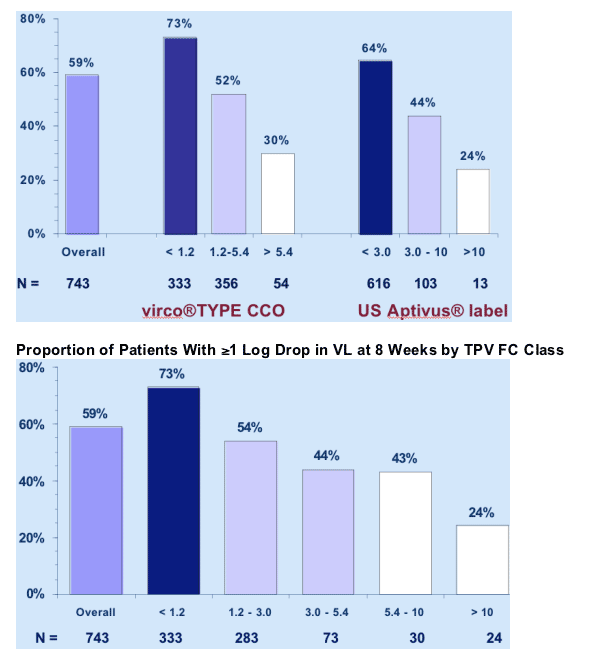
WHAT DO THE VIRCO TYPE CCOs for TPV/r MEAN?
< 1.2 baseline TPV FC = -1.9 median change in viral load at 8 weeks (n=333)
1.2 - 5.4 TPV FC = -0.9 median change in viral load at 8 weeks (n=356)
>5.4 TPV FC = -0.2 median change in viral load at 8 weeks (n=54)
BACKGROUND. Tipranavir (TPV), a non-peptidic inhibitor of HIV-1 protease, has recently been approved for use in combination therapy for highly treatment-experienced patients or those resistant to multiple protease inhibitors.
Evaluation of the clinical impact of viral resistance in such populations is a complex and evolving process.
Linear regression modeling (LM) can be used to predict the HIV-1 drug susceptibility phenotype (Fold Change in IC50, FC) from the viral genotype. The development and performance of a linear regression model for tipranavir (TPV) is illustrated. This new technology, VirtualPhenotypeTM - LM (VPT-LM), is applied in the virco TYPE HIV-1 resistance analysis report (version VPT 4.0.00).
Linear Modeling is a data-driven method that can identify new resistance-associated mutations, assess their weighted contribution to phenotypic resistance, and provide accurate predictions of the phenotype from the viral genotype.
Samples with identical tipranavir mutation scores have a broad range of measured FC values.
Linear Model driven predictions allow differentiation among genotypes with identical tipranavir mutation scores on the basis of the predicted FC.
Discordances in resistance classifications between virco TYPE HIV-1 v4.0.00, based on VPT-LM FC predictions, and Antivirogram are largely due to different approaches to Cut-Off values. The two assays are highly concordant when identical Cut-Offs are applied.
METHODS. Based on >6,000 clinical isolates with both drug susceptibility phenotypes (Antivirogram) and viral genotypes, a multiple linear regression model (VirtualPhenotype-LM, VPT-LM ) was developed to predict TPV fold change in IC50 (FC) from the viral genotype (vircoTYPE HIV-1 4.0.00).
Using data from RESIST 1 and 2, a separate linear regression model was developed to predict 8-week change in viral load on regimens containing ritonavir-boosted TPV (TPV/r). 495 and 250 TPV/r containing regimens were used to define and validate two clinical cut-offs (CCO) corresponding to predicted TPV FC values associated with a 20% or 80% loss of the TPV/r response predicted for subjects infected with wild type strains.
Predicted protease inhibitor FC values for >50,000 clinical isolates submitted for routine resistance analysis in 2004-5 were used to assess current resistance and cross-resistance to TPV.
LRM selects 87 protease gene mutations and pairs of mutations as significant in predicting TPV FC
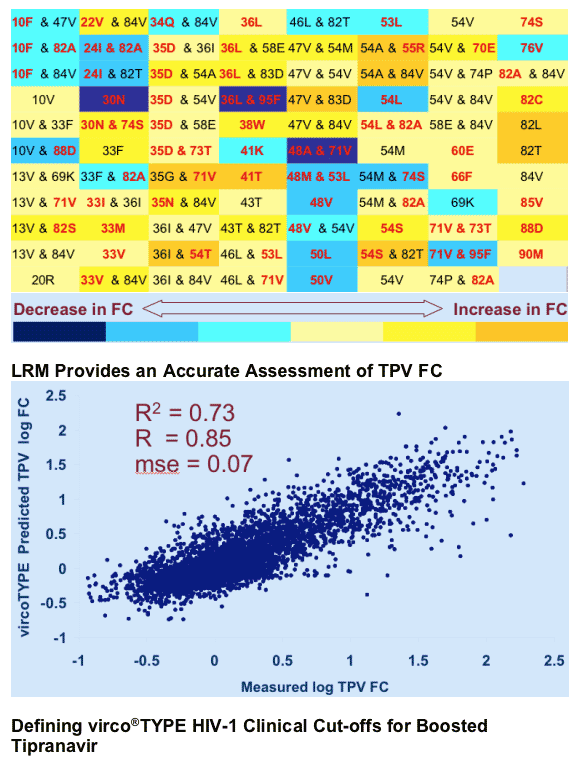
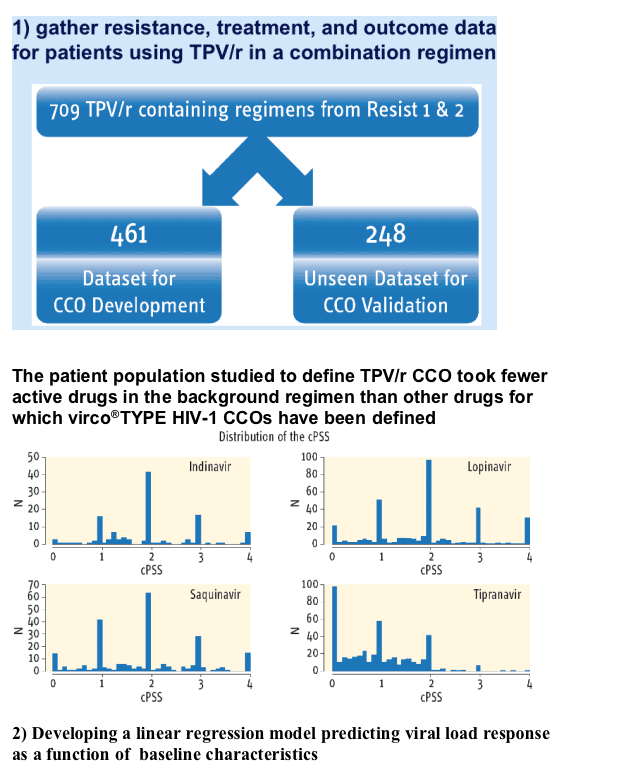
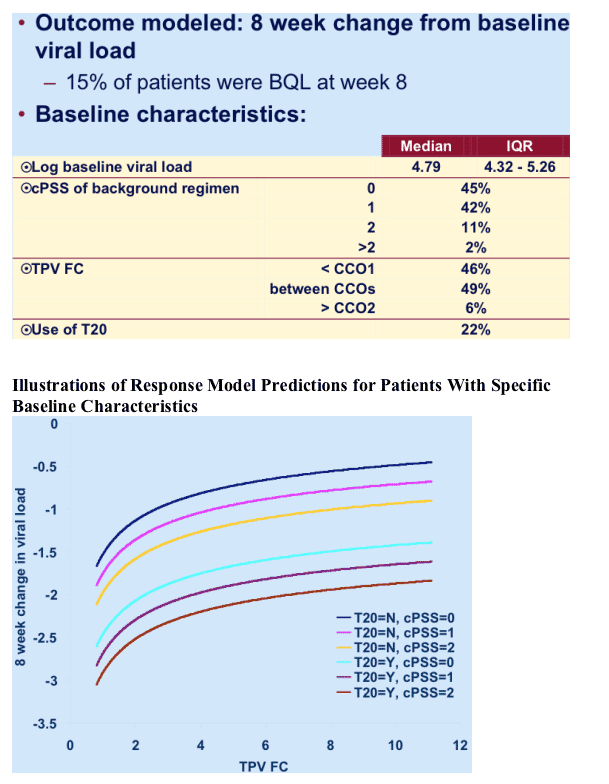
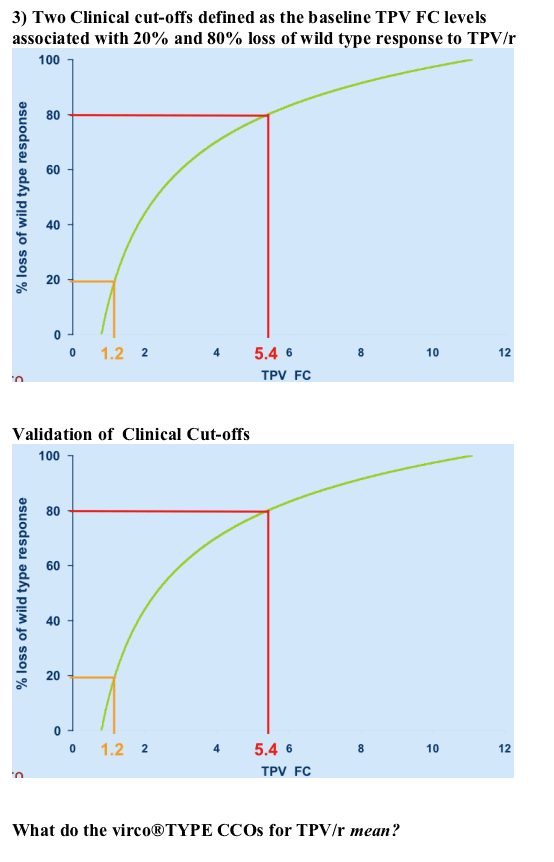
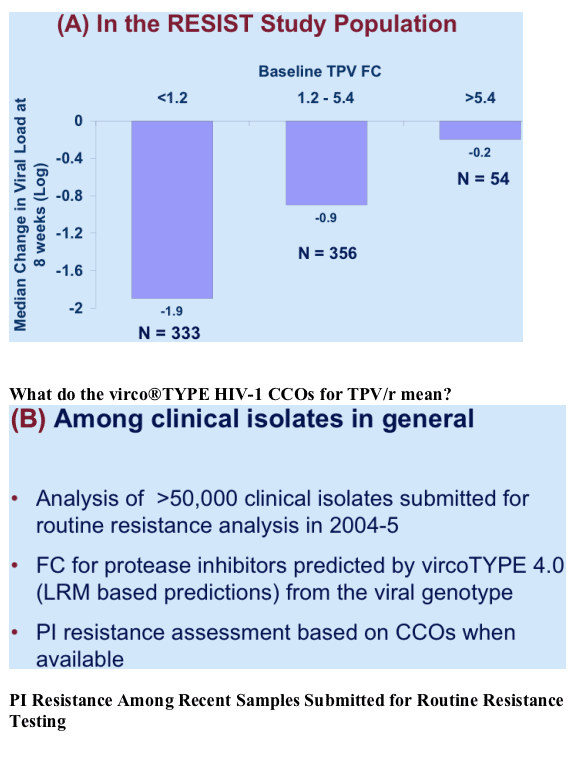
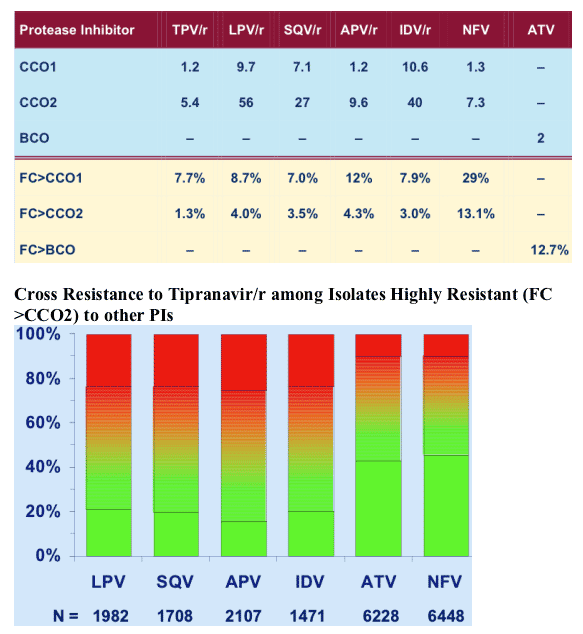
|
|
| |
| |
|
|
|